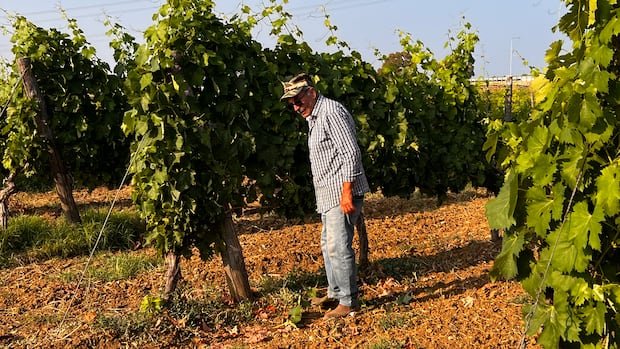Islanders are being urged to take precautions to prevent the spread of a tree fungus that has now been detected in three areas of P.E.I.
Butternut canker is a fast-spreading disease that attacks butternut trees. While the trees are not believed to be native to the Island, they are widely planted across the province.
“It is really a death sentence, unfortunately, for the tree once it receives butternut canker,” said Clay Cutting, a technician with the P.E.I. Invasive Species Council.
Once the tree is infected, there is no known way to stop the fungus’s spread — eventually, the host tree dies when multiple cankers work in conjunction to girdle the tree.
Cutting said the council is well aware of how devastating the fungus can be to butternut tree populations because of how the disease has impacted other provinces.
According to a news release from the P.E.I. Invasive Species Council, over 80 per cent of butternut trees in Ontario have been killed by butternut canker to date, with an overall infection rate of more than 99 per cent.
Symptoms and signs
The fungus was first observed in trees in Stratford’s Robert Cotton Park in 2024. Since then, the invasive species council conducted surveys on butternut trees in Charlottetown and Stratford and found that a majority “demonstrated signs of butternut canker infection,” according to the news release.
Scientists with the Canadian Forest Service confirmed the identification of the disease in July.

“The most obvious sign and symptoms of butternut canker are those large, sunken cankers that appear on the trunks in the branches. They’re mostly elongated, and the cankers exude a black substance,” Cutting said.
He said the appearance of the fungus can differ based on how long the tree has been infected, and the time of year.
The colouring of the infected area can range from black to dark brown. In newer cases, the symptoms are not as obvious and can look like raised patches with small cracks in the bark that exude a black substance.
How does it spread?
The only confirmed way butternut canker spreads is through rainfall, Cutting said.
“The rainwater will hit an infected tree, maybe spread that around the canopy, splashing fungal spores around the canopy.”
He’s not ruling out other methods of spread like the handling of firewood, or insects and birds coming into contact with the fungus.
There are no known control methods for affected populations, and butternut trees’ endangered status may limit their removal based on P.E.I.’s Wildlife Conservation Act regulations.
The invasive species council said Islanders can take steps to care for certain trees that have show a higher level of tolerance to the disease.
This can be done by pruning out infected branches and removing cankers to help minimize the amount of the fungus in the area to potentially extend the tree’s lifespan.







